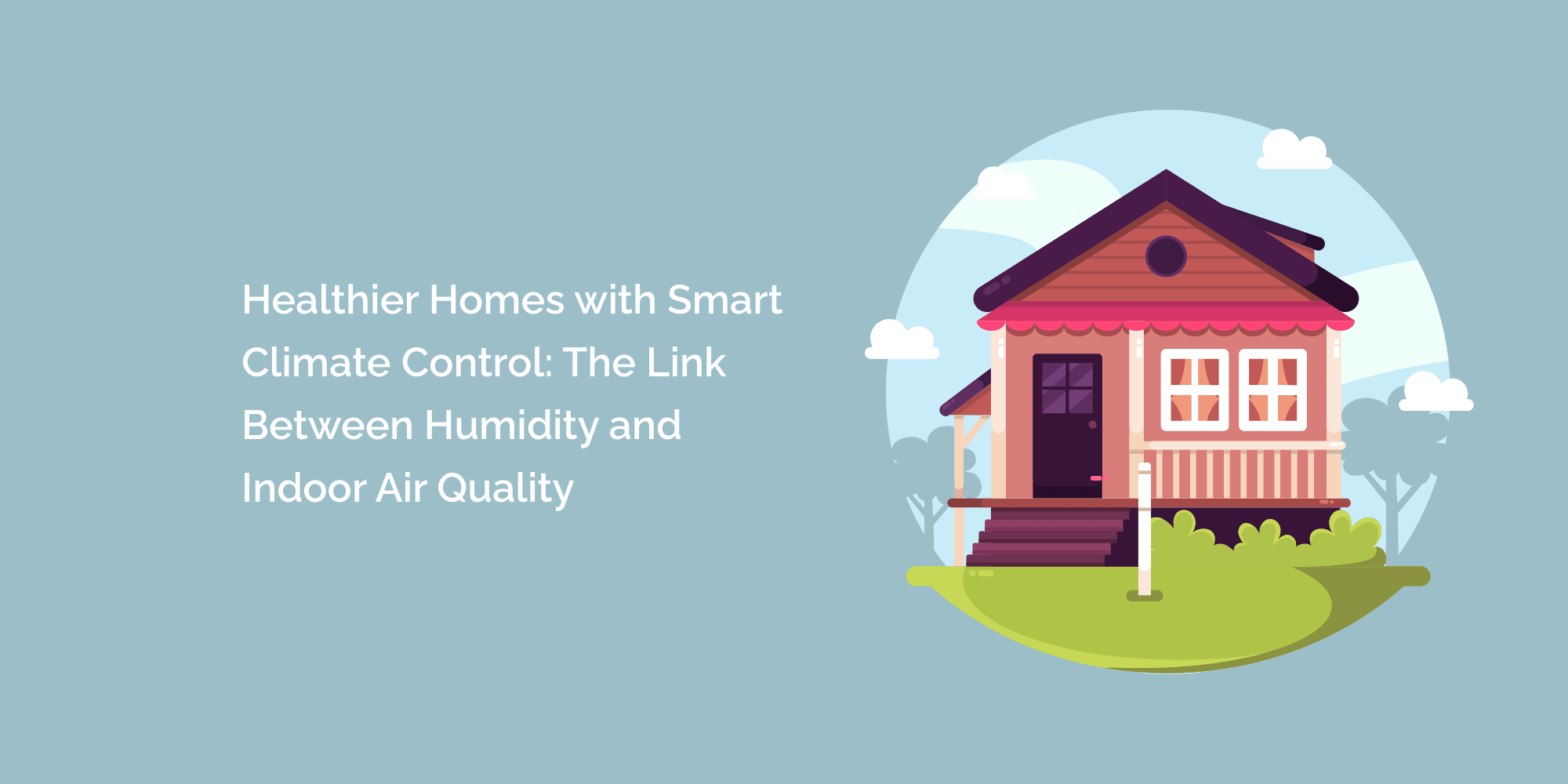Creating a comfortable and healthy living environment within our homes is a top priority for homeowners worldwide. While temperature control has long been a focus, the importance of indoor air quality (IAQ) is gaining prominence. The guardians of our spaces are now equipped with smart climate control systems that not only regulate temperature but also manage humidity levels. In this blog, we will explore the integral link between humidity and indoor air quality and how smart climate control is revolutionizing our homes for a healthier future.
Understanding Indoor Air Quality
Indoor air quality refers to the condition of the air within our living spaces. It encompasses factors such as pollutants, allergens, odors, and humidity levels. Poor indoor air quality can lead to a range of health issues, including respiratory problems, allergies, and even long-term health risks. In contrast, maintaining optimal indoor air quality contributes to our overall well-being and enhances the quality of life for ourselves and our loved ones.
Humidity's Impact on Indoor Air Quality
Humidity, the amount of moisture present in the air, plays a pivotal role in indoor air quality. It affects the growth of mold, dust mites, and other allergens. High humidity levels can create a breeding ground for these irritants, leading to respiratory problems and allergic reactions. Conversely, low humidity levels can cause dryness, irritation, and discomfort.
Mold Growth and Allergen Proliferation
Excessive humidity can lead to mold growth on surfaces and within hidden areas of our homes. Mold spores release allergens and mycotoxins that can trigger allergic reactions and worsen respiratory conditions. Smart climate control systems monitor humidity levels and help prevent mold proliferation by maintaining them within a healthy range.
Dust Mites and Other Allergens
Dust mites thrive in humid environments. These microscopic creatures are a common source of allergies and asthma triggers. By managing humidity levels, smart climate control systems inhibit dust mite growth, reducing the presence of allergens in the air and on surfaces.
Volatile Organic Compounds (VOCs)
Humidity can also influence the release of volatile organic compounds (VOCs) from materials such as paints, cleaning products, and furnishings. Elevated humidity levels can accelerate the off-gassing of these chemicals, contributing to poor indoor air quality. Smart climate control systems help maintain humidity levels that minimize the release of VOCs, creating a healthier environment.
The Role of Smart Climate Control
Smart climate control systems combine temperature and humidity regulation to optimize indoor air quality. These systems utilize sensors to monitor humidity levels and adjust climate settings accordingly. By preventing humidity extremes, these systems contribute to a healthier living environment, reducing the risks associated with mold, allergens, and VOCs.
Balancing Humidity for Health and Comfort
Achieving the right balance of humidity is crucial for both health and comfort. The ideal relative humidity level for indoor spaces typically falls between 40% and 60%. Smart climate control systems ensure that humidity levels remain within this range, creating a comfortable living environment that promotes respiratory health and well-being.
Personalized Control and Automation
Modern smart climate control systems offer personalized control and automation features. Homeowners can set preferred humidity levels and allow the system to adjust accordingly. Additionally, these systems can be integrated with other smart home devices, such as air purifiers and dehumidifiers, to work in tandem for enhanced indoor air quality.
Real-time Monitoring and Alerts
Smart climate control systems provide real-time monitoring of humidity levels. In the event of fluctuations, these systems can send alerts to homeowners, allowing them to take corrective action promptly. This proactive approach prevents issues related to high or low humidity levels before they escalate.
Energy Efficiency and Savings
Beyond health benefits, smart climate control systems contribute to energy efficiency and cost savings. By maintaining optimal humidity levels, these systems optimize the performance of heating and cooling systems, reducing energy consumption and lowering utility bills.
Creating a Healthier Future
The integration of smart climate control systems into our homes aligns with the broader movement toward healthier living spaces. As awareness of the connection between humidity and indoor air quality grows, homeowners are empowered to make informed decisions about their living environments, fostering a healthier and more comfortable lifestyle for themselves and their families.
Conclusion
Our homes are more than just physical structures; they are sanctuaries that shape our well-being. The introduction of smart climate control systems revolutionizes the way we approach indoor air quality, recognizing the crucial link between humidity and health. By managing humidity levels, these systems mitigate the risks of mold, allergens, and VOCs, creating a healthier and more comfortable environment. As we embrace the potential of smart technology to enhance our living spaces, we take a significant step toward a future where our homes truly safeguard our health and happiness.








